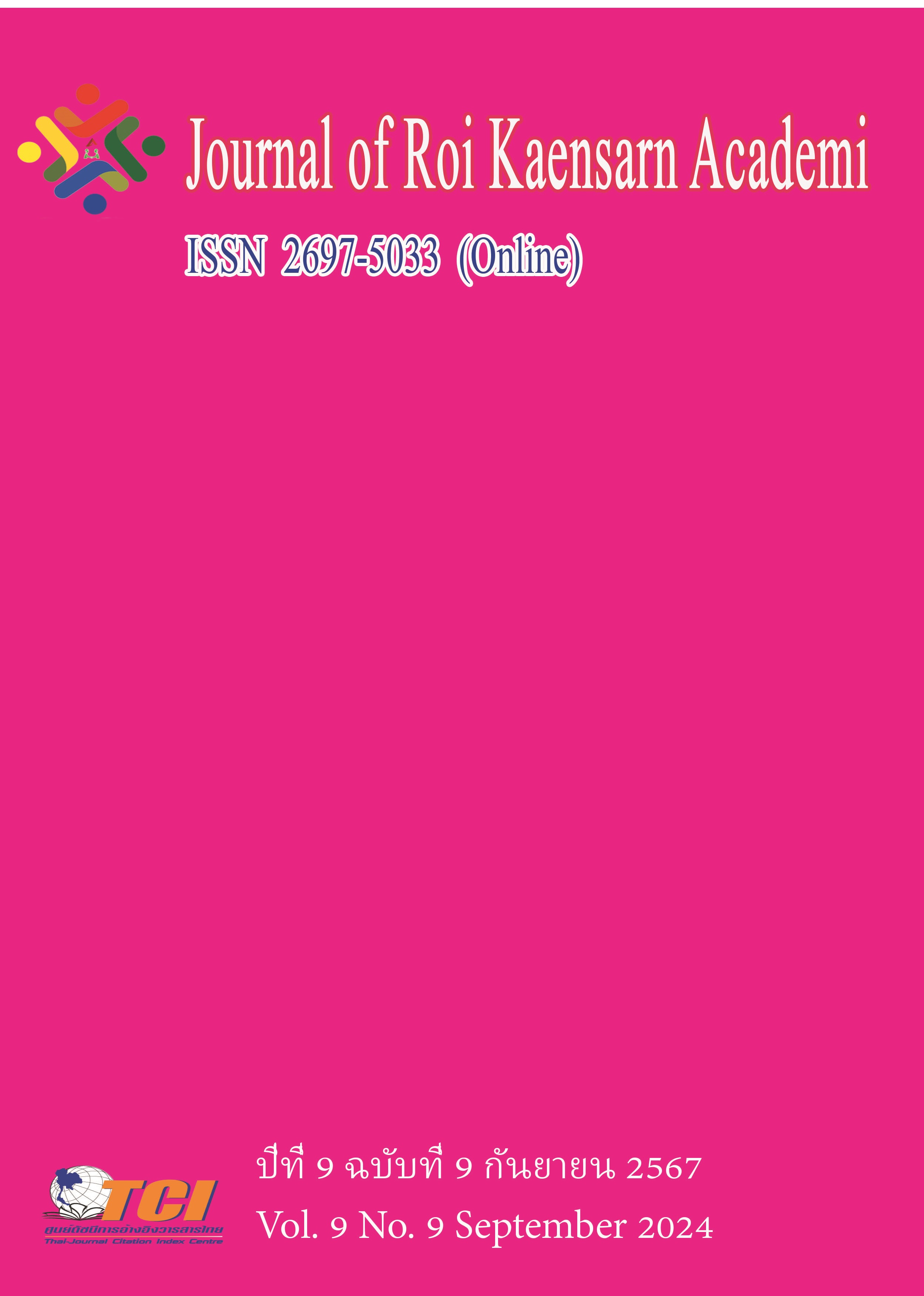Influence of College Student’ Artificial Intelligence Quotient on Employability
Main Article Content
บทคัดย่อ
This study establishes on the review of relevant Chinese and foreign literature and the interview results, three variables of college students' employability, artificial intelligence quotient and self-regulation index system are established, and reliability analysis, exploratory factor analysis and confirmatory factor analysis are carried out. Secondly, AMOS22.0 is used to build a structural equation model to analyze the effects of artificial intelligence quotient and self-regulating variables on college students' employability. SPSS22.0 was used to explore the influence of artificial intelligence quotient and self-regulation on college students' employability, and the adjustment effect of self-regulation variables was analyzed. The results show that the creativity, data power, communication power, learning power and individual acceptance of college students will positively and significantly affect their employability in the intelligent era. College students' artificial intelligence quotient and self-regulation will positively and significantly affect their employability. Self-regulation can significantly enhance the influence of artificial intelligence quotient on the employability of college students, that is, self-regulation has a significant positive regulating effect on the influence path of artificial intelligence quotient on the employability of college students.
Article Details
เอกสารอ้างอิง
Bandura, A. (1986). Social Foundation of Thoughts and Actions: A Social Cognitive Theory. Prentice-Hall. (pp. 23-27).
Bandura, A. (1986). Social foundations of thought and action. Englewood Cliffs, NJ, 1986(23-28).
Boden, R., & Nedeva, M. (2010). Employing discourse: universities and graduate ‘employability’. Journal of Education Policy, 25 (1), 37-54.
Browning, G., Webster, F., & Halcli, A. (1999). Understanding contemporary society: Theories of the present. Understanding Contemporary Society, 1-520.
Cheung, G., & Rensvold, R. (2002). Evaluating goodness-of-fit indexes for testing measurement invariance. Structural Equation Modeling: A Multidisciplinary Journal, 9 (2), 233-255.
Cochran, G. (1977). Sampling Techniques. 3rd ed. New York: John Wiley & Sons.
Dacre Pool, L., & Sewell, P. (2007). The key to employability: developing a practical model of graduate employability. Education+ training, 49 (4), 277-289.
Fugate, M., Kinicki, A. J., & Ashforth, B. E. (2004). Employability: A psycho-social construct, its dimensions, and applications. Journal of Vocational behavior, 65 (1), 14-38.
Harvey, L. (2001). Defining and measuring employability. Quality in higher education, 7 (2), 97-109.
Hair, J., Black, W., Babin, B., Anderson, R., & Tatham, R. (2013). Multivariate data analysis. 7th ed. New York: Pearson Education Limited.
Jackson, D. (2016). Re-conceptualising graduate employability: The importance of pre-professional identity. Higher Education Research & Development, 35 (5), 925-939.
Lu Juan, Lu Yan, & Lou Yingchun. (2006). Service loyalty and its driving factors: An empirical study based on banking industry. Management World, (8), 94-103.
Lu Min, & Zhu Xiao Mei. (2008). Research progress of college students' employability. Modern Economy: Modern Property Second Half, (9), 102-103.
Li, J. J. (2009). Review of Bandura's Social Learning Theory. Journal of Shayang Normal College, 10 (3), 22-25.
Li Junkai. (2013). Research on the model of college students' employment ability structure. Educational Academic Monthly, (2), 64-67.
Li Ying, Liu Shanshi, & Weng Saizhu. (2005). The Impact of College Students' Employability on Employment Quality. Higher Education Exploration, (2), 91-93.
Moreland, N. (2006). Entrepreneurship and higher education: an employability perspective (Vol. 6). York: Higher Education Academy.
Ren Xuemei., Li Huifang., & Zhao Jing. (2022). Research on AIQ talent cultivation + Production and Education integration path in the intelligent era: A case study of Hebei Province. Shanxi youth.(3)
Rothwell, A., Herbert, I., & Rothwell, F. (2008). Self-perceived employability: Construction and initial validation of a scale for university students. Journal of vocational behavior, 73 (1), 1-12.
Sakdapat, N. (2023). The Role of Psychological Factors and Situational Factors on the Financial Planning Behavior of Private Sector Employees in Thailand. International Journal of Economics and Finance Studies, 15 (1), 449-465.
Wang Yuhan. (2021). A study on the influence of Artificial Intelligence Quotient (AIQ) on college students' employability: A case study in Hangzhou University. Hangzhou Dianzi University.
Wang Zuobing. (2018). Educational Revolution in the era of artificial intelligence. Education. Beijing: Beijing United Press Company.
Wang Feng. (2018). Optimization and empirical research on the employment ability structure of college students based on supply-demand coupling (Doctoral dissertation, China University of Mining and Technology).
Wang, J., & Wang, X. (2012). Structural equation modeling: Applications using Mplus. John Wiley & Sons. https://doi.org/10.1002/9781118356258
Wang, L., & Yuan, Q. (2011). Self-regulation theory and the career cognitive growth of college students in job seeking. Talent Resources Development, (7), 43-45.
Yorke, M., & Knight, P. (2014). Being strategic about employability. Educational Developments, 5 (4), 6.
Yu Guoliang. (2010). Social Psychology. Beijing Normal University Press.
Yu Xiaoya. (2021). Why to become a future teacher with High AI quotient. Chinese national education.
Zhang Hongzhong, Shi Weiying, & Liu Liming. (2018). How to understand the impact of artificial intelligence on media industry from the perspective of technical logic. Press, (2), 17-22.
Zhao Yan, Wan Ping, Yin Yiqing, Li Li, Liu Chenchen, & Wang Youmei. (2020). The connotation of Artificial Intelligence Quotient (AIQ) in the era of AI, competence Framework and Improvement Strategies: A cognitive survey analysis based on "Artificial intelligence + Education" in universities. Journal of Distance Education, 38 (4), 48-55.

